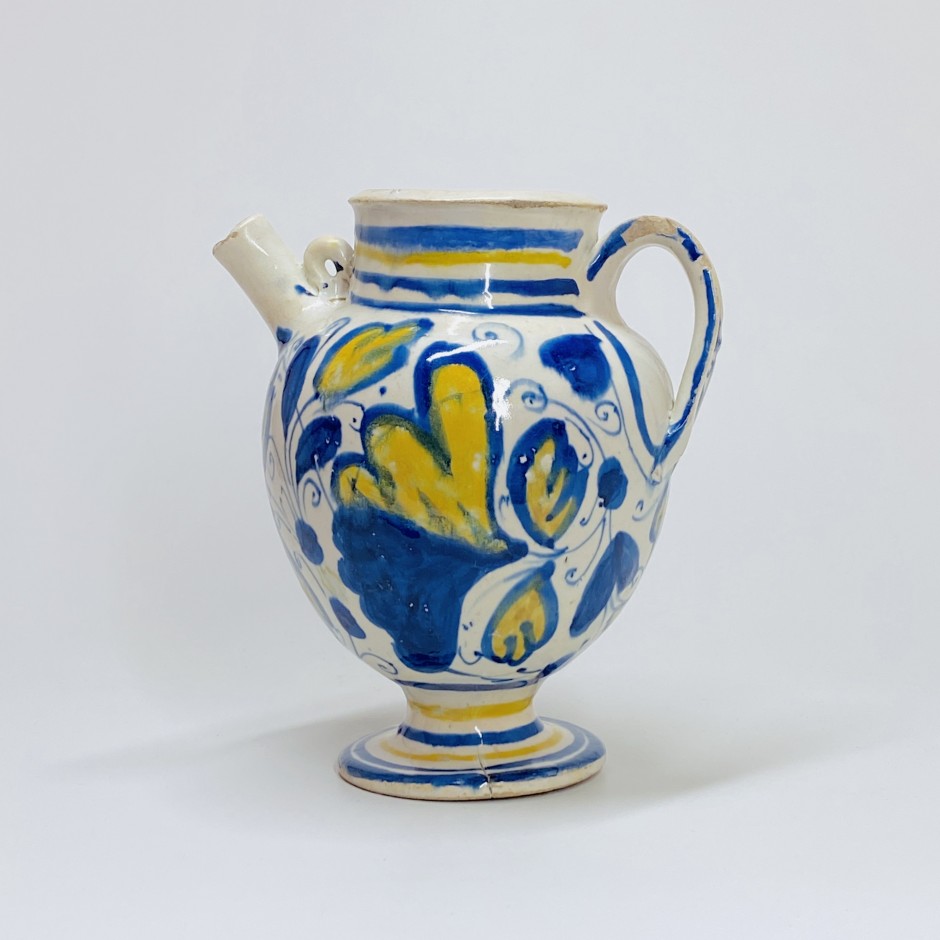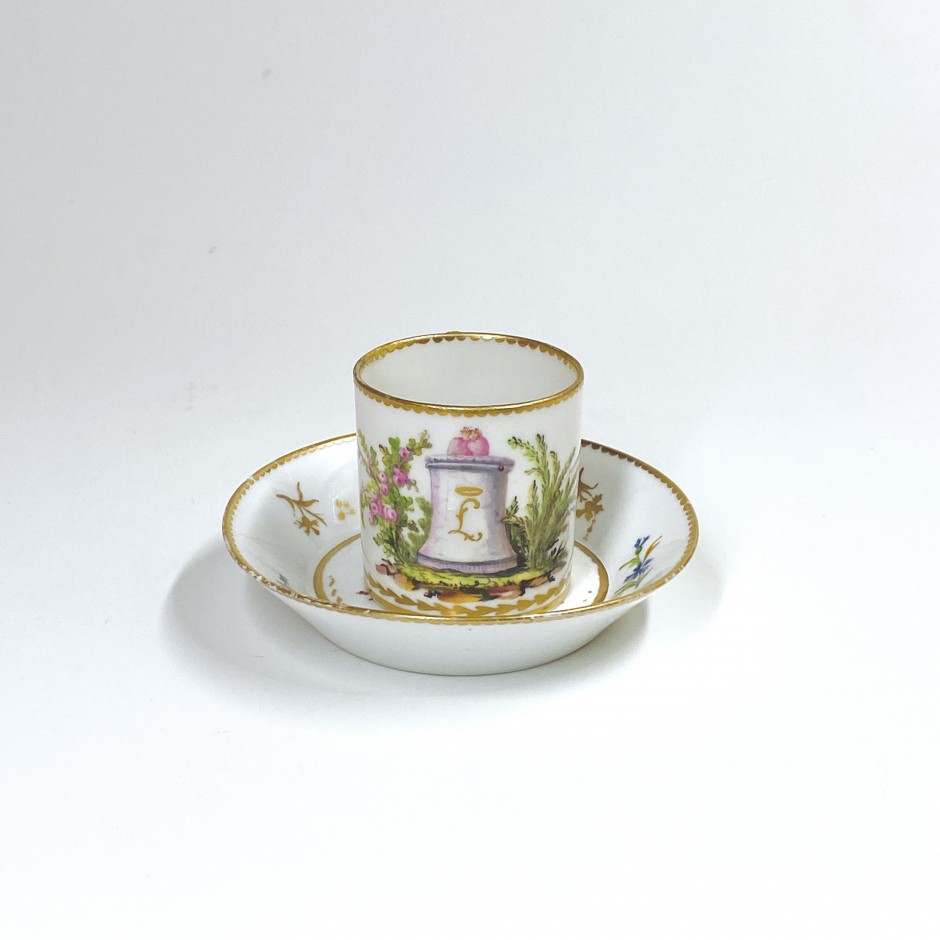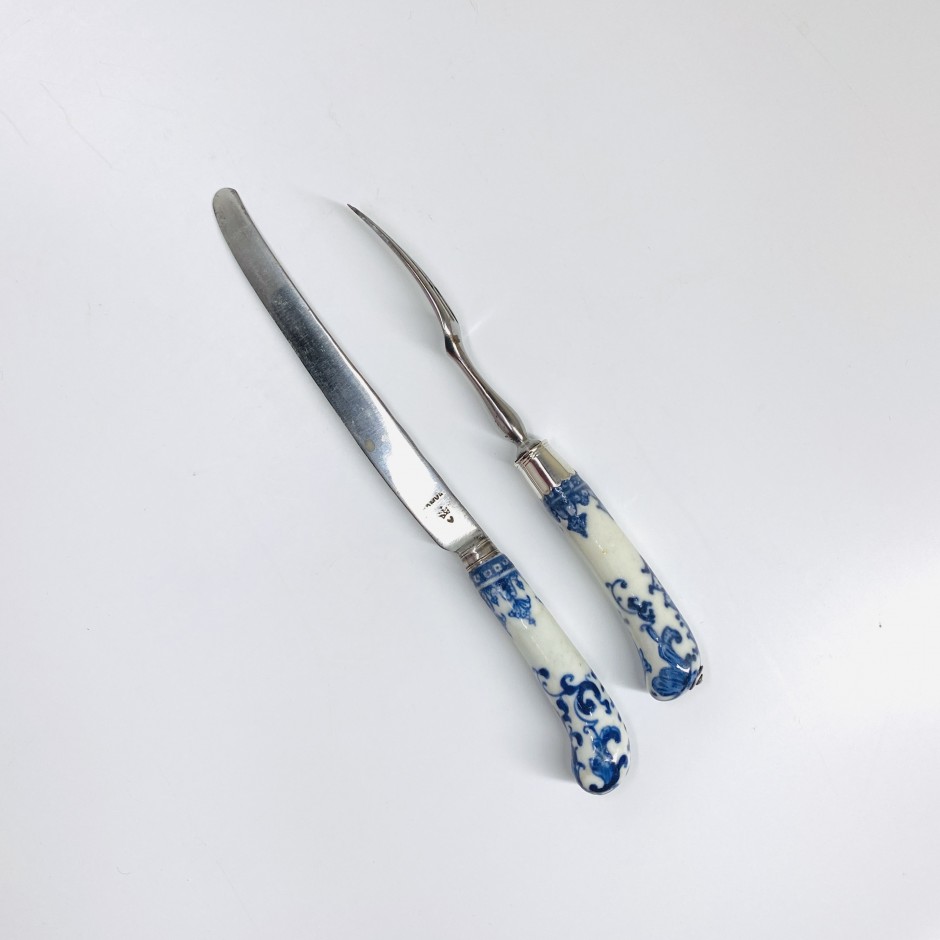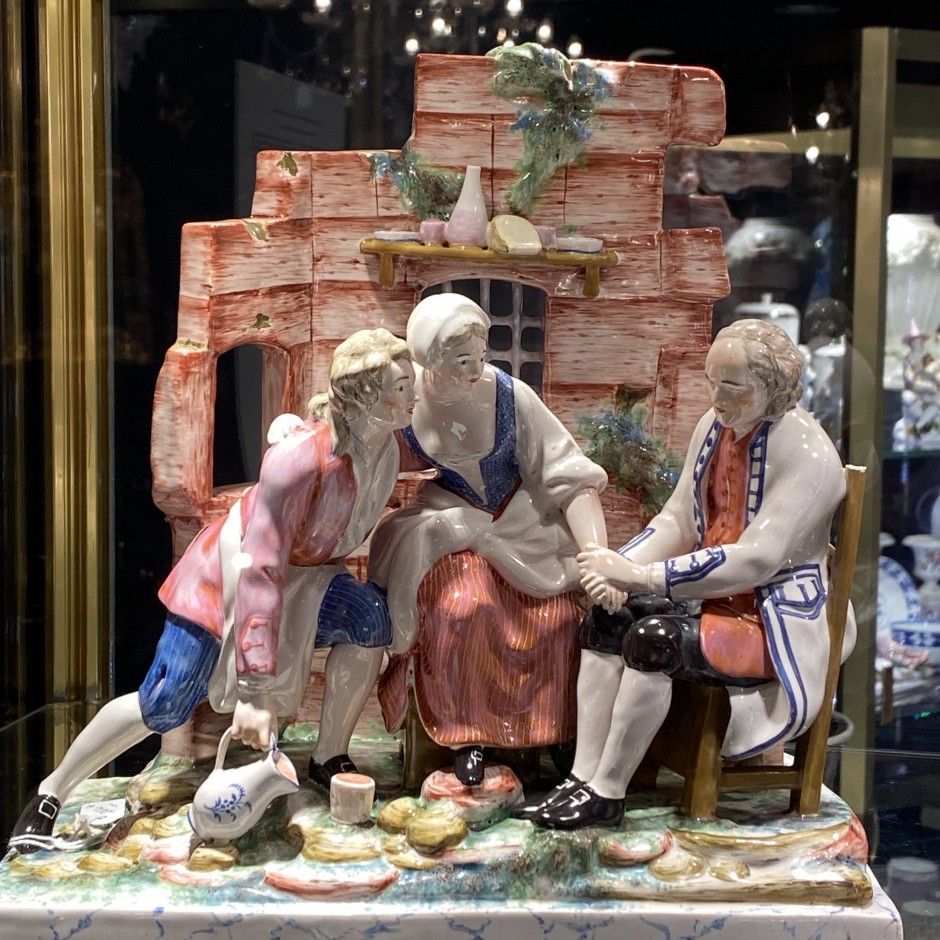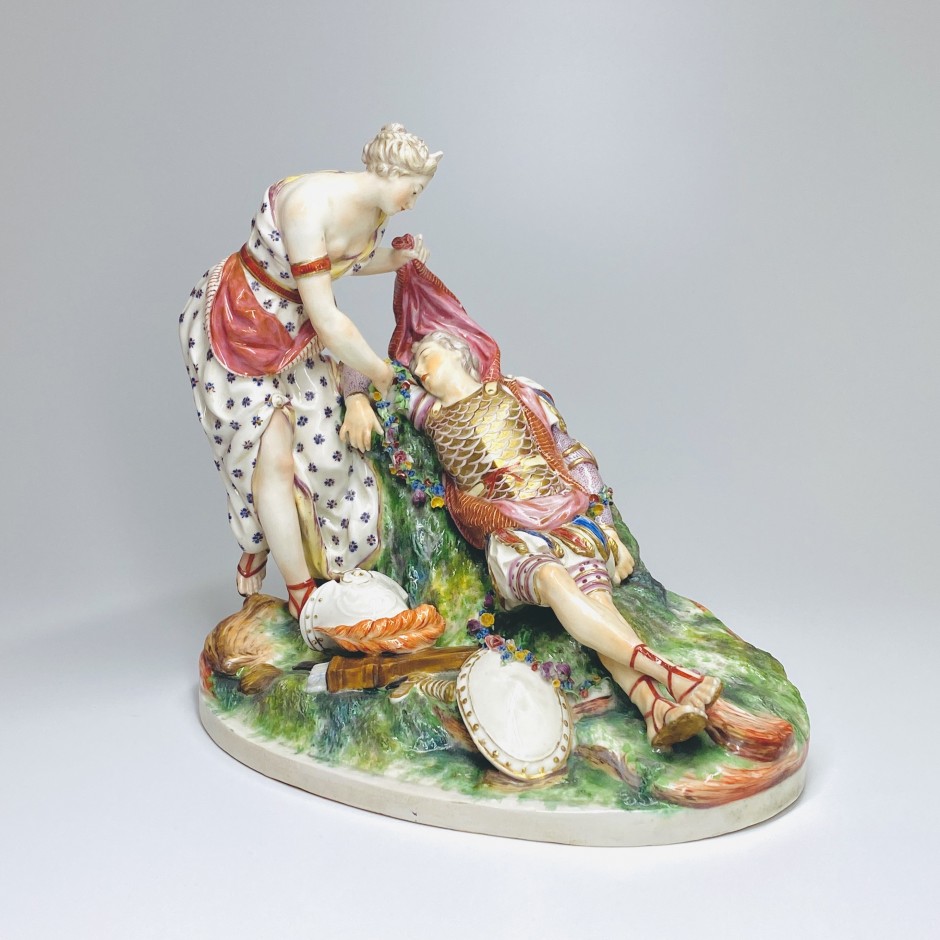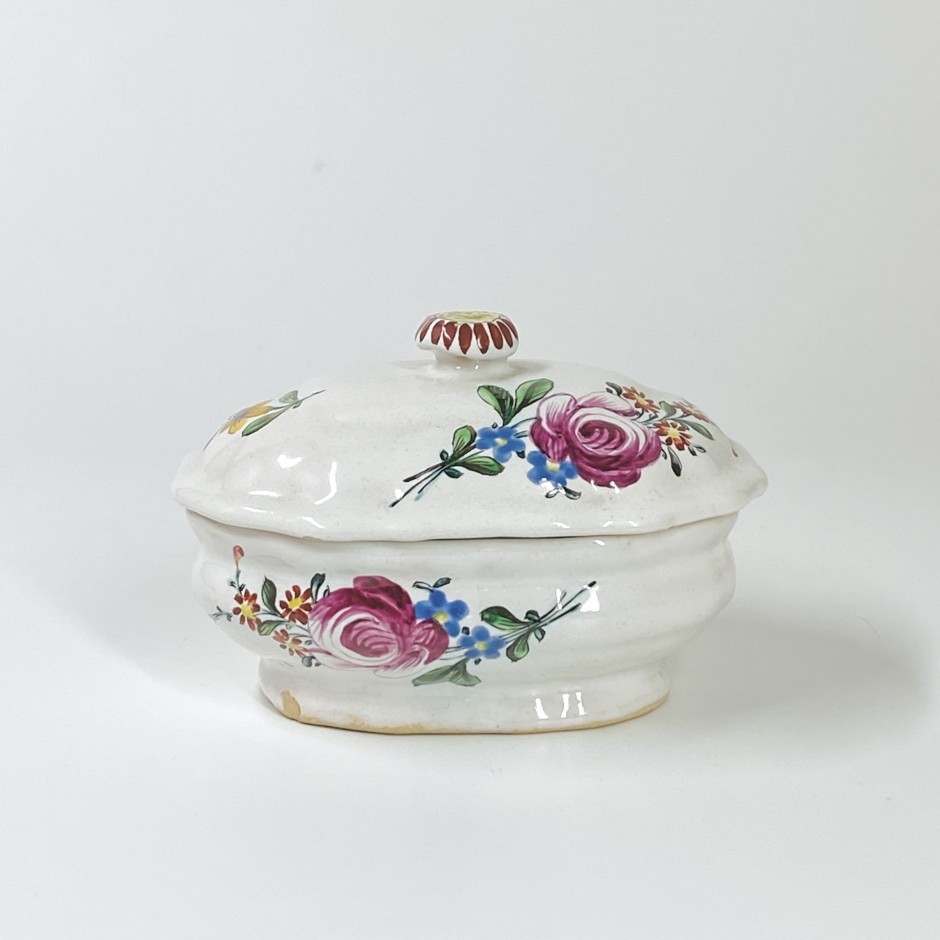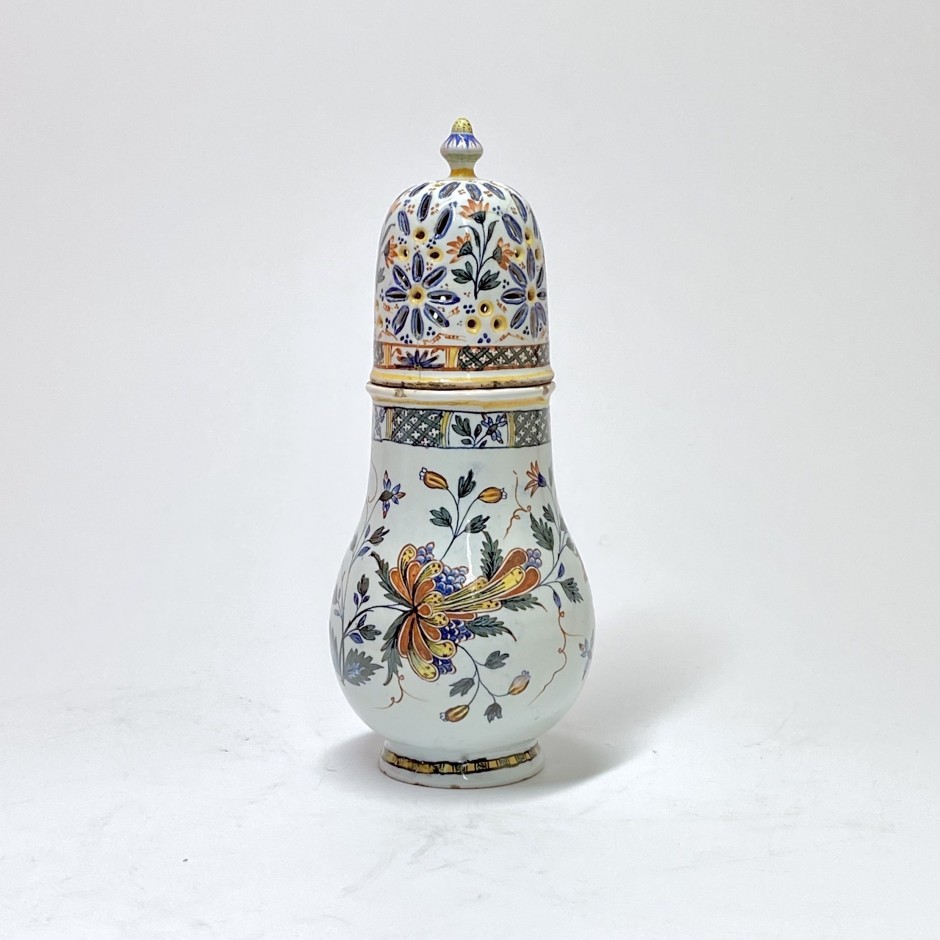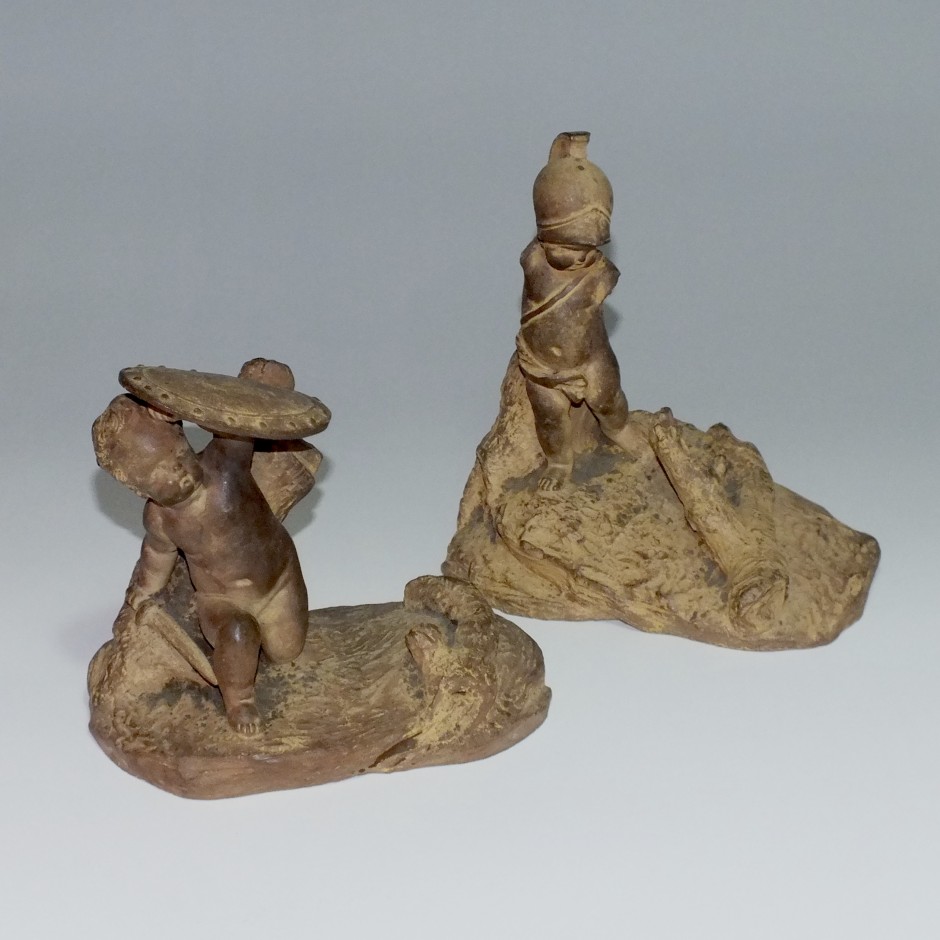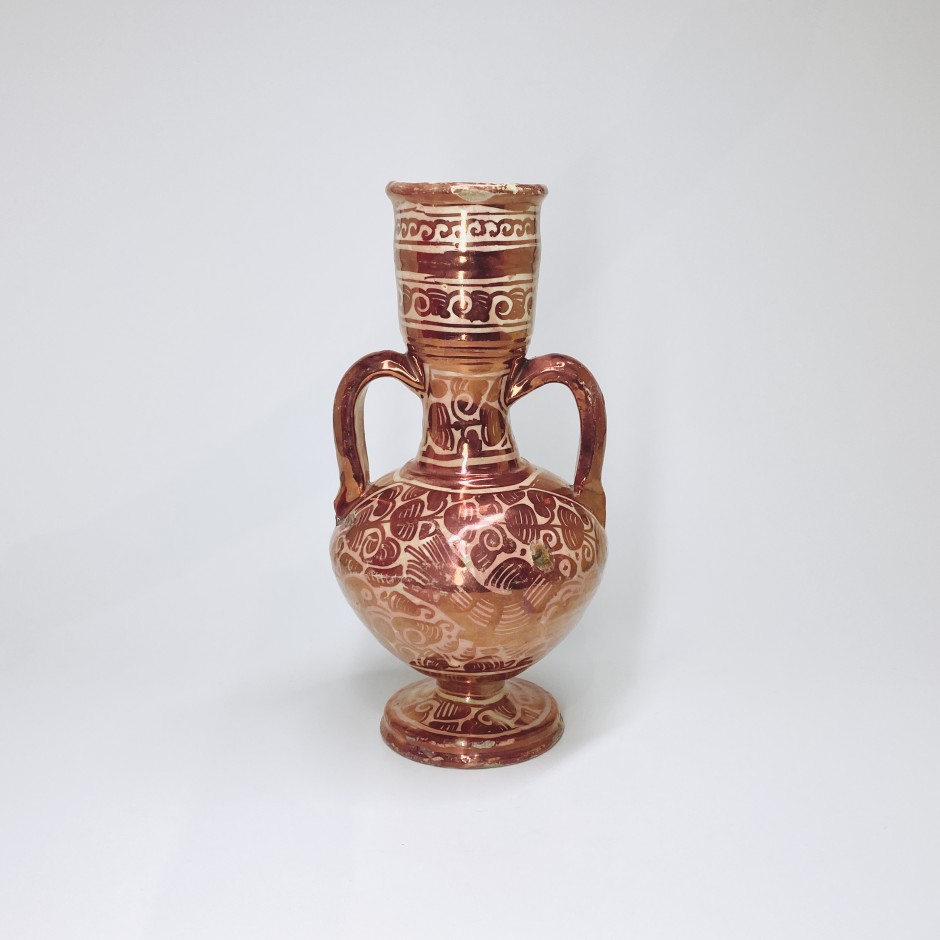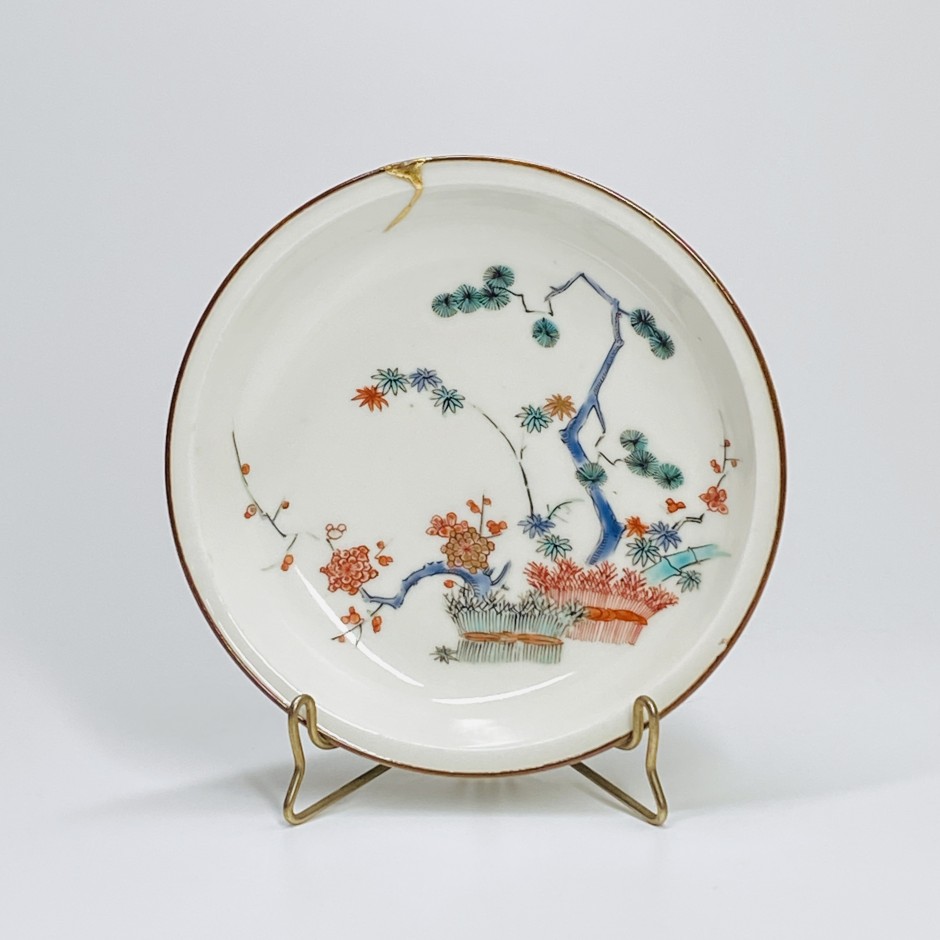Archives There are 774 products.
Lyon - Apothecary pot in majolica - Second half of...
Apothecary pot in majolica from Lyon with flat handle and ring, polychrome decoration in half-leaf, blue and yellow ocher fillets on the collar and at the foot - Second half of the sixteenth century
Sèvres - Porcelain cup and your saucer decorated...
Litron cup and your saucer in Sèvres porcelain with polychrome decoration of two flaming hearts placed on a marble altar framed on either side by leafy branches and branches of roses, the altar bearing the initial L crowned in gold. The saucer decorated with shrubs and stones on a mound and seedlings of cornflowers around the perimeter. Rim of the cup and saucer underlined with wolf teeth in gold. Marked with two crowned interlaced Ls, HH for year 1785, painter's mark Y for Bouillat - Eighteenth century
Saint-Cloud - A knife and a fork - Eighteenth...
A small knife and a small fork, the handles in soft Saint-Cloud porcelain, finished in a butt decorated in blue shades of lambrequins. The period mounts in silver and steel blade with a cutler's mark - Early eighteenth century
Niderviller earthenware group "The deceived blind...
Large earthenware group from Niderviller, this one seems unpublished to date, after the painting by J.B Greuze "the deceived blind man". This group on a rectangular base in imitation of marble, with natural polychrome decoration, representing a young peasant couple welcoming a blind man. These characters are in front of a stone wall pierced with two openings, one of which has a gate, simulating the interior of a dwelling - 18th century - Around 1770-1780 - Marked below with the two CCs for Custine. This group seems the only one known to date. .
Niderviller - “Renaud and Armide aslep” porcelain...
Porcelain group with polychrome and gold decoration representing Renaud and Armide aslep, after the work of the sculptor Lemire. Eighteenth century - around 1765-1770 - Provenance: Label from the house of Nicolier, 7, Quai Voltaire, Paris and that of Monsieur Vincent L'herrou. A similar group, in Niderviller earthenware, after the work of the sculptor Lemire, is reproduced in the work “La Faïence française” by Dr. Chompret (plate 25A).
Saint-Cloud - Carving knife and fork - early...
Carving knife and fork with soft Saint-Cloud porcelain handle decorated in blue shades of lambrequins, silver ferrule and steel blade. Beginning of the eighteenth century
Holics - Spice box - Eighteenth century - SOLD
Covered spice box in earthenware from Holics (Hungary) with polychrome decoration of flowers in small fire, the grip of the lid in the shape of a flower - Eighteenth century - Marked.
Rouen - Pair of bottle vases - Early eighteenth...
Pair of Rouen faience bottle vases, cut-sided shape, decorated in blue and red with lambrequins with some yellow highlights, squared reserves and falling flowers. Eighteenth century - Around 1720 - Ref: Former Tumin collection, reproduced in the catalog of its sale in 1936 - They figured in the retrospective exhibition of French earthenware at the Museum of Decorative Arts in Paris in 1932.
Rouen - Rare sprinkler with "honeysuckle" decoration...
Beautiful and rare Rouen earthenware sprinkler in the baluster shape on a heel (rare form in Rouen) with rotating polychrome decoration called "honeysuckle" The openwork lid, decorated with flowering branches, on the edges braids with green crosses and stylized flower reserves. Eighteenth century - Circa 1740. Bears the Papillon collection label N° 284.
Pair of terracotta statuettes "Children Natural...
Pair of terracotta statuettes "Children Natural History» by Boizot. 1785-1786 to the Sèvres manufactory edited several figures and groups of children with insects. These objects had the peculiarity of having genuine mounted insects placed in porcelain children sides. Hettlinger, inspector of the factory at the time was responsible for the creation of such figures - Eighteenth century
Baluster vase - Hispano-Moorish - Early eighteenth...
Long baluster vase on a pedestal, with a neck fitted with two handles, decoration with coppery red metallic reflections of birds on a background of foliage - Sevententh - Eighteenth century
Japan - Small porcelain plate with Kakiemon...
Small porcelain plate japanese with polychrome Kakiemon decoration of flowering hedge, prunus and pine. End of the seventeenth century - Beginning of the eighteenth century. Kintsugi restoration on the edge.
